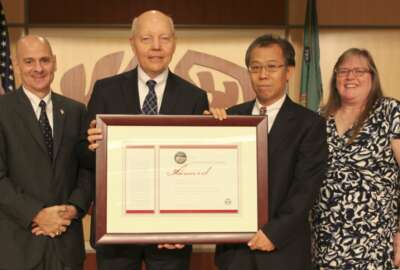
Census Bureau: Same work, different pay
The Census Bureau pays enumerators less so for the work than for where they do the work.
The Census Bureau, having launched a hiring drive for up to a half-million enumerators, will pay them what the labor market will tolerate.
In April, Census will inaugurate the first, fully 21st century count. People will receive a code in the mail so they can use the internet to send back their household information. But not everyone will. The Bureau is therefore revving up its hiring machinery. It’ll need up to a half-million temporary, part-time enumerators. They’ll use mobile devices to record information, meaning no one 75 years from now will be able to view an organic connection to one’s past.
Bureau outreach says enumeration provides an interesting way to earn a few bucks during nice weather. The jobs are temporary and part-time, but not easy. Given that few people answer their phones anymore, you wonder, do people answer their doors? It’s not as if anyone is expecting the Fuller Brush Man these days.
Federal employees sometimes fret about locality pay. Every year Congress adds a couple of more secondary cities as worthy of locality pay, which gets you a skosh higher salary because of the local cost of living. But between, say, New York City and New Orleans, you don’t get pay differentials for the same job, of 2-to-1 or 2.5-to-1.
But that’s not the case for some federal jobs, such as Census enumerators. Out of curiosity, I explored the Census’ enumerator hiring site. Not that I need the part time work, although it would be a good way to get in those daily steps.
In Montgomery County, Maryland, where I live, enumerators will be paid $29.50 per hour. Not bad. But in adjacent Prince Georges county, which has somewhat different demographics but is similarly big and busy, the pay is $22.50 an hour. On the Eastern Shore in Dorchester County, from which Harriet Tubman escaped slavery in the the 1850s, the pay scale is only $18.50.
I didn’t check all of the 40,000-odd counties in the United States. The highest enumerator pay I could find was San Mateo County, California, where it ranges to $30 an hour. In New York City it ranges between $25 and $28.50 an hour, about equal with San Francisco. In less affluent Erie County, where Buffalo is located, enumerators can expect a relatively paltry $18 to $20 an hour.
Ah, but in, say, Copiah County, Mississippi, which houses the Jackson statistical area, the pay drops to $15. In Conecuh County, Alabama, where the population is roughly 13,000, the pay is $14.50. In fact, no where in Alabama does the pay exceed $16. All Maine counties, including remote Aroostook, enjoy $20.
Texas falls in the middle of the pack, with pay up to $23.50 in the Dallas and Austin areas, and $24.50 for Houston.
And so it goes. Some will get twice the pay as others for identical work by the identical employer.
Related Stories
Since the Founding, enumerators have been central to getting an accurate count of who’s living in the United States. When you think about it, enumeration takes real skill. Enumerators need patience, good human relations, physical endurance, and reliable knowledge of what they are doing.
I’m looking at a facsimile of the 1940 Census form that included my mother’s household in the Petworth section of Washington, D.C. The census-taker’s penmanship was impeccable; old fashioned script like they used to teach in grade school. He used a fountain pen. Mother was 15 years old at the time, my uncle was 9 years old. My grandparents had a boarder in the four-bedroom, yellow-brick row house, as was common in those days. Old family stories reveal that not everyone in the neighborhood was friendly or approachable.
It makes you wonder what they paid enumerators before World War II. Whatever it was, I’ll bet census-takers in California didn’t earn twice as much as those in Alabama.
Copyright © 2025 Federal News Network. All rights reserved. This website is not intended for users located within the European Economic Area.
Tom Temin is host of the Federal Drive and has been providing insight on federal technology and management issues for more than 30 years.
Follow @tteminWFED






